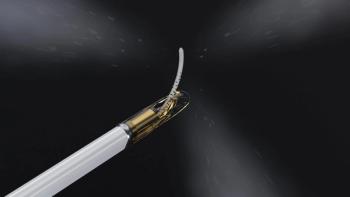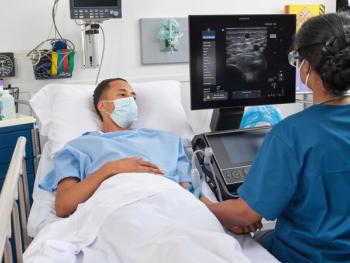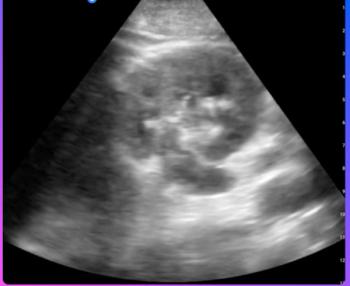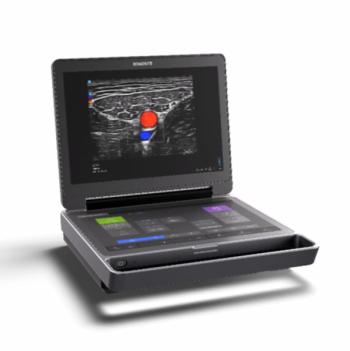
MSCT complements endoscopic ultrasound in gastrointestinal cancer staging
While both multislice CT and endoscopic ultrasound can evaluate the local extension of esophageal tumors, CT can also image distant metastases in the lymph nodes, lungs, and liver with a single exam, providing superior staging of T3 and T4 cancers, according to a study from Austria presented at the 2005 European Congress of Radiology. CT is not without weaknesses, however.
While both multislice CT and endoscopic ultrasound can evaluate the local extension of esophageal tumors, CT can also image distant metastases in the lymph nodes, lungs, and liver with a single exam, providing superior staging of T3 and T4 cancers, according to a study from Austria presented at the 2005 European Congress of Radiology. CT is not without weaknesses, however.
Dr. Ahmed Ba-Ssalamah, a radiologist at the Medical University of Vienna, and colleagues enrolled 23 patients with esophageal carcinoma. Patients underwent endoscopic sonography and contrast-enhanced MSCT scanning using a gas-water GI-filling technique.
Endoscopic ultrasound and MSCT each provided a 100% sensitivity rate for tumor detection, but the sensitivity of other endpoints varied. Ultrasound was favored for tumor staging (89% versus 79%) and for diagnosis of local node involvement (82% versus 76%). CT came out on top in diagnosing distant node involvement and other metastases (65% versus 92%).
The researchers performed ultrasound scanning using a fiber-optic endoscope with a 5-1-MHz electronic array that provides a 360° scanning angle. They performed CT with a 16-slice scanner and a bowel distention protocol including gas granules and water for the esophagus and stomach, respectively, and a contrast injection using a bolus-tracking technique.
Their acquisition protocol included slice thicknesses of 0.5 mm and 1.5 mm, respectively, for the thoracocervical and abdominal regions. They used postsurgical histopathologic results as their comparative gold standard.
MSCT offers a field-of-view depth superior to endoscopic ultrasound for staging and detection of local disease and distant lymph node metastases, Ba-Ssalamah said. But MSCT isn't perfect Differentiation between T1 and T2 stages using the bowel distention-plus contrast technique is difficult, if not impossible. And MSCT's spatial resolution is still inferior to endoscopic ultrasound.
Clinical experience in the preoperative staging of esophageal cancer indicates that the two techniques are complementary rather than competitive in this realm, he said.
For more information from the Diagnostic Imaging archives:
Newsletter
Stay at the forefront of radiology with the Diagnostic Imaging newsletter, delivering the latest news, clinical insights, and imaging advancements for today’s radiologists.



























